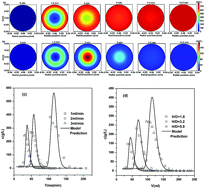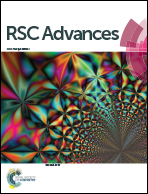Desorption of 1-butanol from polymeric resin: experimental studies and mathematical modeling
Abstract
Desorption is essential to design an integrated recovery process for 1-butanol, a potential biofuel. The modeling of desorption processes is a significant tool to optimize the separation process of 1-butanol. In this work, we systematically studied the desorption of 1-butanol from a porous polymeric resin KA-I by solvent desorption technique. The desorption equilibrium, desorption kinetics and dynamic desorption behaviors were studied experimentally and simulated theoretically. About 1.5 bed volumes of absolute ethanol could desorb 1-butanol completely with 73.6 g L−1 1-butanol in the effluent in the fixed bed system. A pore diffusion model was used to fit the desorption kinetics of 1-butanol satisfactorily. The concentration evolution of eluent and 1-butanol in the resin pore was simulated. During desorption, the concentration of 1-butanol in the resin pore increases gradually at first, and then decreases gradually due to the slower pore diffusion. Moreover, a general rate model was used to predict the dynamic desorption profiles of 1-butanol under different operating conditions successfully. Finally, repeated adsorption and desorption dynamic cycles were predicted by the general rate model quite well.


 Please wait while we load your content...
Please wait while we load your content...